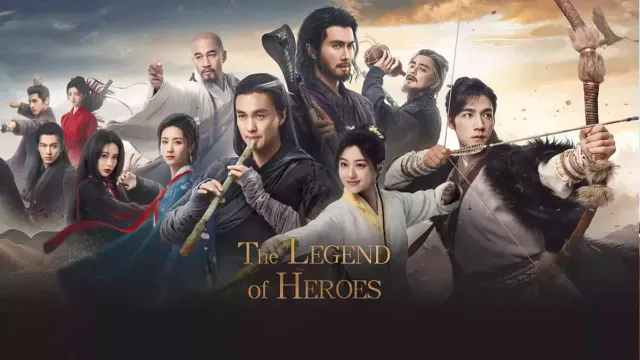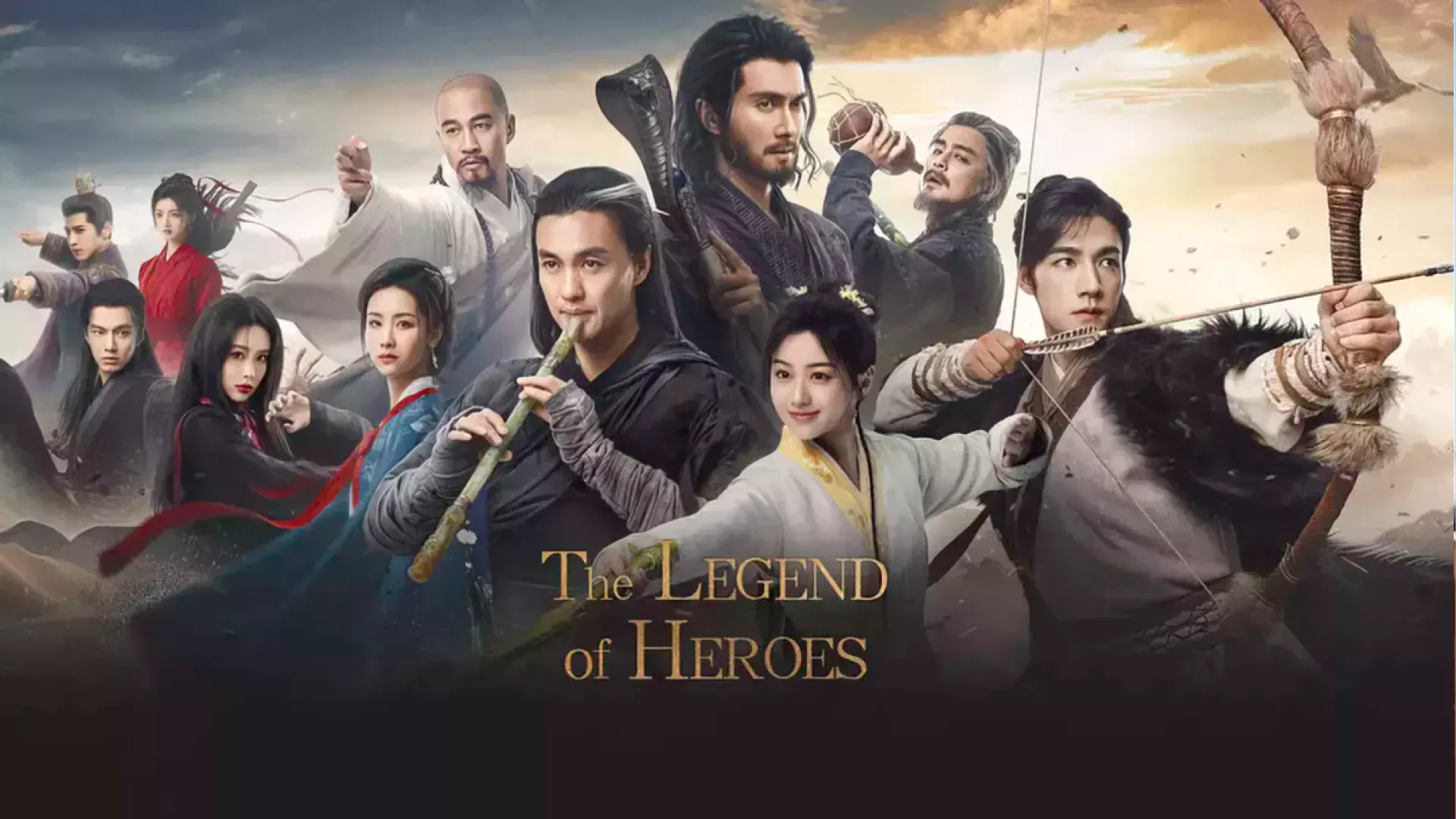Sha Tongtian (simplified: 沙通天, traditional: 沙通天, pinyin: Shā Tōngtiān, jyutping: saa1 tung1 tin1), known as the Dragon King of Devil’s Gate, was one of the most formidable villains in the jianghu during the late Song Dynasty. As the leader of the Four Ghosts of the Yellow River and a master of water combat techniques, he served as one of Wanyan Honglie’s most dangerous agents.
Biography
Early life and training
Sha Tongtian’s background in the Yellow River region provided him with unique opportunities to develop specialized martial arts techniques that would later become his signature fighting style. His early training focused on water combat and the development of neigongs that allowed him to fight effectively in aquatic environments, giving him a significant advantage in battles near rivers and waterways.
His mastery of the Devil’s Gate techniques reflected his willingness to embrace martial arts styles that were considered unorthodox or even dangerous by mainstream practitioners. These techniques emphasized power and efficiency over traditional aesthetic considerations, making them particularly effective in combat situations where survival and victory were the primary objectives.
Establishment of the Four Devils
Sha Tongtian’s creation of the Four Ghosts of the Yellow River represented his understanding of how organized groups could achieve objectives that would be impossible for individual martial artists. By recruiting and training four disciples with complementary skills, he created a force that could operate both independently and as a coordinated unit, making them particularly effective in various combat and intelligence-gathering operations.
The selection of his disciples reflected his strategic thinking and his understanding of how different martial arts styles could complement each other in combat situations. Each of the Four Devils specialized in different weapons and techniques, creating a group that could adapt to various challenges while maintaining their collective effectiveness.
Serving Wanyan Honglie
Sha Tongtian’s recruitment into Wanyan Honglie’s service marked a significant turning point in his career, as it provided him with access to resources and opportunities that would have been impossible to obtain through legitimate martial arts practice alone. His decision to serve the Jin prince reflected both his desire for personal gain and his willingness to use his martial arts abilities to advance foreign political objectives.
The relationship between Sha Tongtian and Wanyan Honglie was characterized by mutual exploitation, as the Jin prince gained access to a skilled martial artist and his organized group of followers while Sha Tongtian received financial rewards and protection from the consequences of his actions.
Operations and missions
Sha Tongtian’s various operations for Wanyan Honglie demonstrated his versatility as both a martial artist and a strategic operator. His missions ranged from escorting tribute barges and ambushing Song couriers to ferrying Mongol envoys across the Yellow River. On one occasion he disguised his flotilla as a merchant convoy, lured Guo Jing onto a boat laced with concealed crossbows, and nearly drowned him before Huang Rong cut the anchor ropes. These incidents reflected his understanding of how martial skills and logistics combined to advance political goals.
Personality and traits
Sha Tongtian was characterized by his ruthless nature, strategic cunning, and complete lack of moral scruples. His willingness to serve foreign powers and commit acts of violence for political objectives demonstrated his prioritization of personal gain over loyalty or ethical considerations. His leadership of the Four Ghosts of the Yellow River showed his ability to command and organize others in pursuit of destructive goals.
Martial arts abilities
Devil’s Gate techniques
Sha Tongtian’s techniques relied on synchronized terror: burning pitch lobbed from ships, gong beats timed to whip cracks, and sudden plunges beneath the surface followed by ambush from below. He trained disciples to chant in guttural tones, creating the illusion that river spirits were crying out for revenge.
Water combat specialization
His specialization in water combat made him a nightmare opponent along the Yellow River. He could skim across floating planks—a crude form of water surface walking—and used weighted ropes to entangle enemy rudders. During the battle near Niujia Village, he ordered his men to saw through pier foundations so the protagonists’ boat collapsed into the current.
Relationships
Sha Tongtian maintained close relationships with his four disciples: Shen Qinggang, Wu Qinglie, Ma Qingxiong, and Qian Qingjian, collectively known as the Four Ghosts of the Yellow River. He also worked closely with Wanyan Honglie, serving as one of the Jin prince’s most dangerous agents.
Behind the scenes
Sha Tongtian’s character in Jin Yong’s The Legend of the Condor Heroes represents one of the author’s most sophisticated explorations of martial arts corruption and foreign influence, serving as both a compelling fictional character and a vehicle for examining broader themes about power, corruption, and moral responsibility.
Character development and literary technique
Jin Yong’s portrayal of Sha Tongtian demonstrates sophisticated understanding of how martial arts skills could be corrupted and used to advance destructive political objectives. The author’s use of Sha Tongtian’s actions to explore broader themes about corruption and moral responsibility creates a character who is both personally compelling and thematically significant.
The contrast between Sha Tongtian’s technical abilities and his actual behavior creates dramatic tension that enhances reader engagement while providing opportunities for examining themes about the relationship between martial arts skill and moral character. His character development from skilled martial artist to active agent of foreign powers provides a framework for exploring questions about growth, development, and the relationship between individual choices and broader historical processes.
Portrayals
Sha Tongtian has been portrayed by various actors in adaptations of The Legend of the Condor Heroes:
Television Series
- 1983 series – Chen Dike as Sha Tongtian
- 1988 series – Portrayal emphasizing the character’s martial arts abilities and leadership
- 1994 series – Chen Dike as Sha Tongtian
- 2003 series – Portrayal emphasizing the character’s strategic thinking and organisational abilities
- 2008 series – Modern interpretation bringing contemporary sensibilities to the character
- 2017 series – Portrayal emphasizing the character’s martial arts mastery and villainous nature
- 2024 series – Interpretation exploring the character’s complex motivations and relationships
Return of the Condor Heroes
- 1995 series – Chen Dike as Sha Tongtian
Most adaptations emphasize Sha Tongtian’s martial arts abilities, his leadership of the Four Ghosts of the Yellow River, and his role as one of Wanyan Honglie’s most dangerous agents, while showcasing the complex political and military dynamics that define his character.
See also
- The Legend of the Condor Heroes characters
- Four Ghosts of the Yellow River
External links
- Sha Tongtian on Wikipedia
- Sha Tongtian (Chinese) on Chinese Wikipedia
- Sha Tongtian (Chinese) on Baidu Baike
- The Legend of the Condor Heroes on Wikipedia


